52 Shopping lists found while working at a supermarket
2023
Created for the exhibition Melbourne Now, presented at the National Gallery of Victoria from March 24 to August 20, 2023. Each sculpture is hand sculpted from earthenware clay and kiln fired.
I was 15 when I first got a part time job as a supermarket cleaner and trolley pusher, and I've worked there on and off for more than half my life. Part of the job was getting rid of any rubbish left behind in the trolleys, it’s usually just receipts and banana peels, but sometimes more interestingly, it’s abandoned shopping lists. Rather than throw away the shopping lists I would instead read them and began to collect them. I now have a collection of over 7,000 found shopping lists.
Most shopping lists are written quickly, unlike ceramics which is a very slow medium, and it’s through this act of slowly recreating the objects that I allow myself the time and space to reflect on them. The shopping lists read like poetry, and are often as revealing as portraiture. Despite their anonymity they’re extremely intimate, providing a unique insight into the people we pass in the aisles.
The history of shopping lists is long, the British Library holds a shopping list from the 10th century written by Tibetan monks. There’s also record of a shopping list from 1518 by Italian artist Michelangelo. It’s believed Michelangelo sketched his shopping lists so that his assistants, who were often illiterate, were able to collect his groceries. It’s possible that physical shopping lists may soon disappear as more people move towards writing them on their phones, even now shopping lists are often one of the few places people will write something by hand.
It’s interesting to consider what we can learn about ourselves from this seemingly mundane ephemera surrounding our daily lives, presenting a reminder of how something so domestic and disposable can reveal so much of who we are and what our legacy might say about us to future generations. By creating a permanent tribute to a fleeting moment, the fifty-two ceramic shopping list sculptures presented in Melbourne Now reveal a portrait of our city, and a time capsule of Melbourne now.
This series has been acquired by the National Gallery of Victoria and has now found a permanent home in the NGV collection.
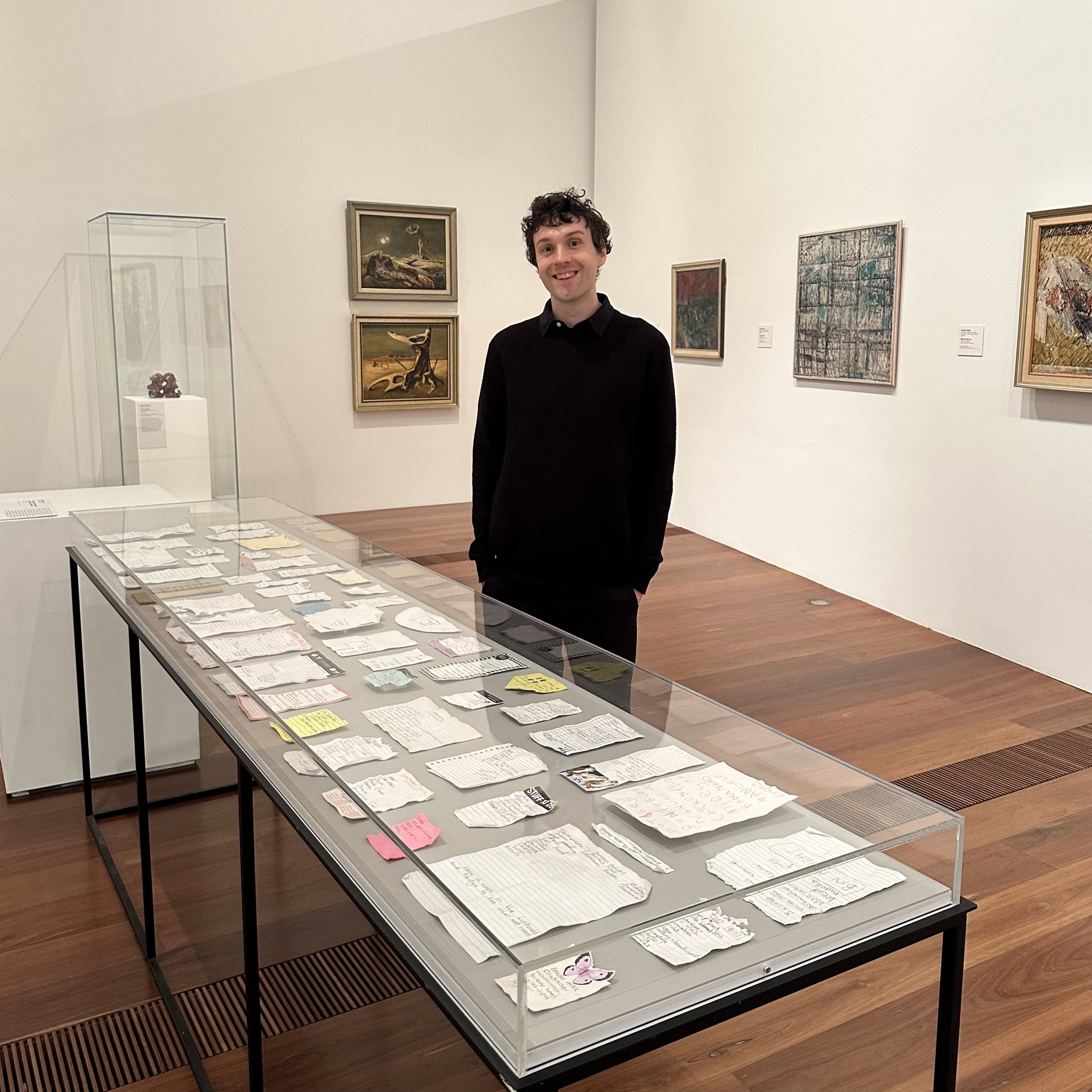







$44

2 Things For Joan

3 sauces

70% dark chocolate

Actalax
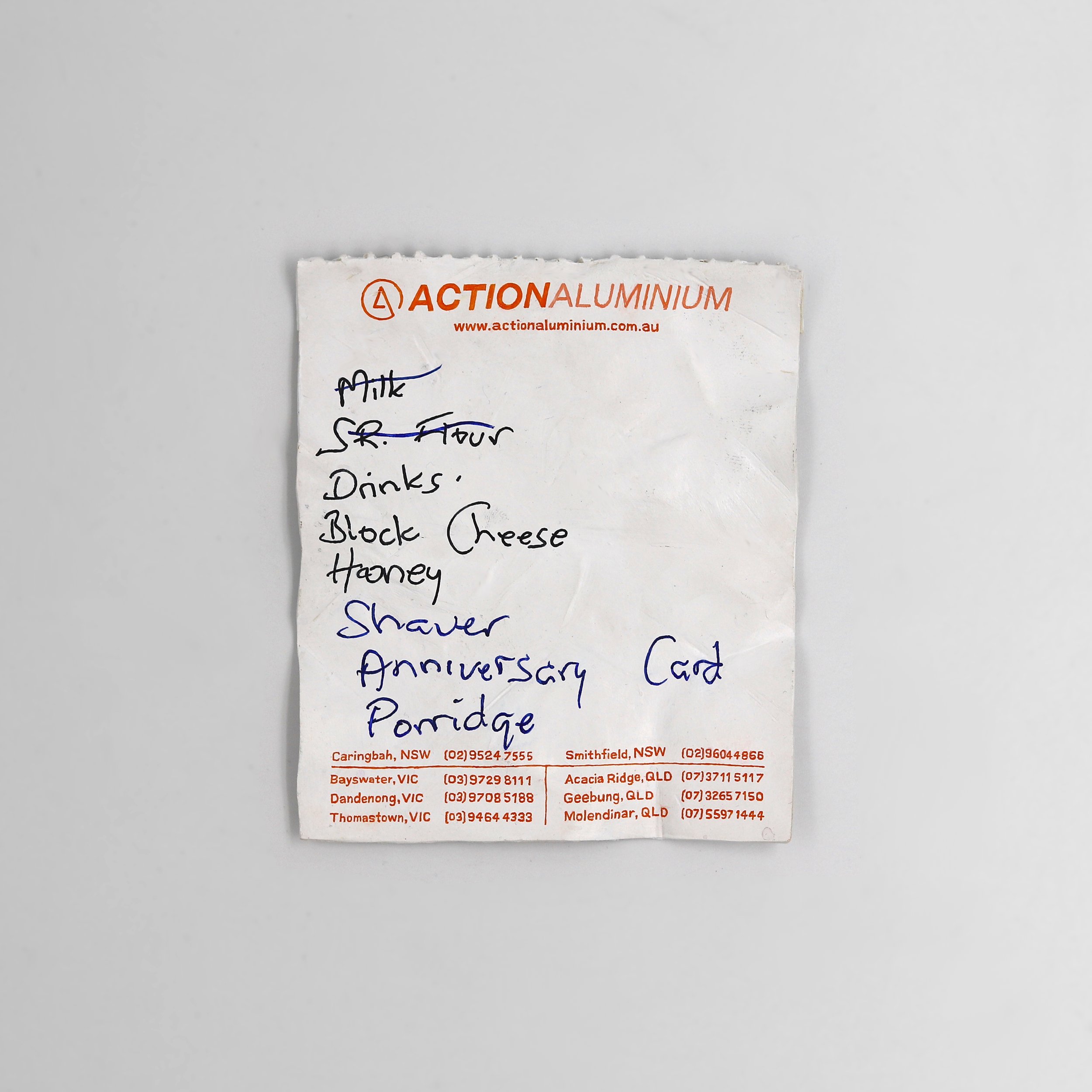
Anniversary Card

Baking paper

Bananans

Bandaids

Be Brave Enough To Dream
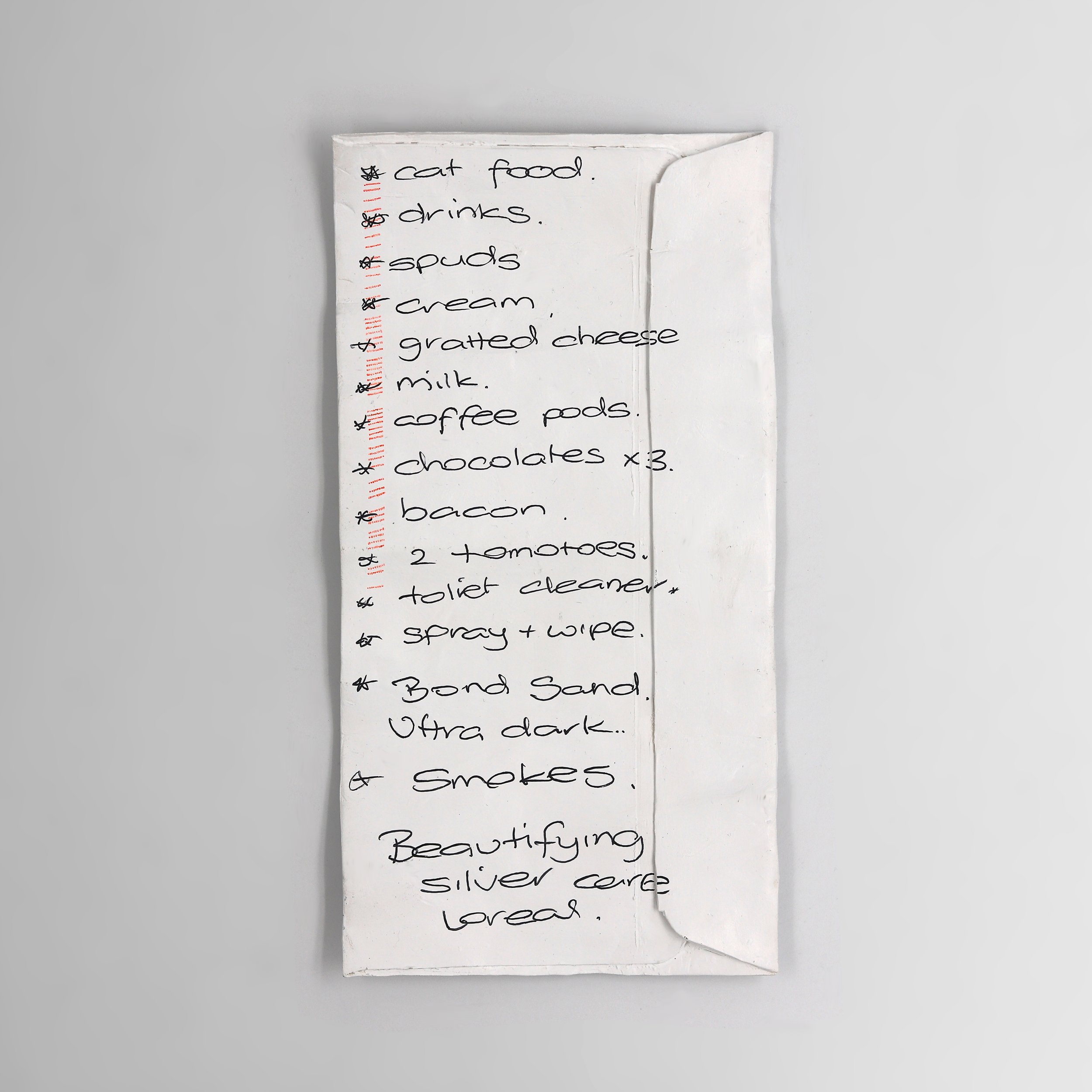
Beautifying silver care loreal

BIN NIGHT

Blackburry

Blue Genedier
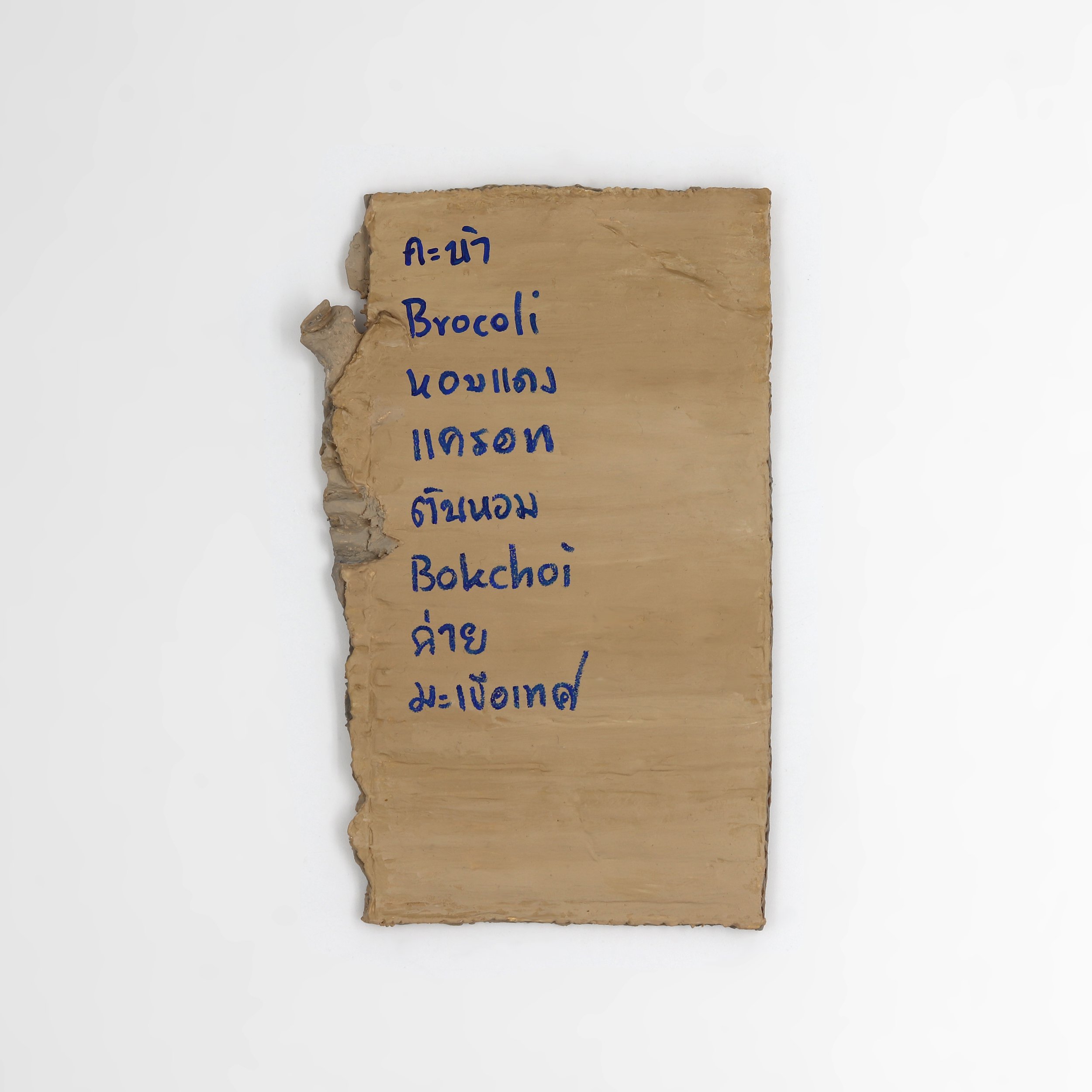
Bokchoi

BONE BISCUITS

CARD 4 JORDAN

Cheese (bloked and grated)
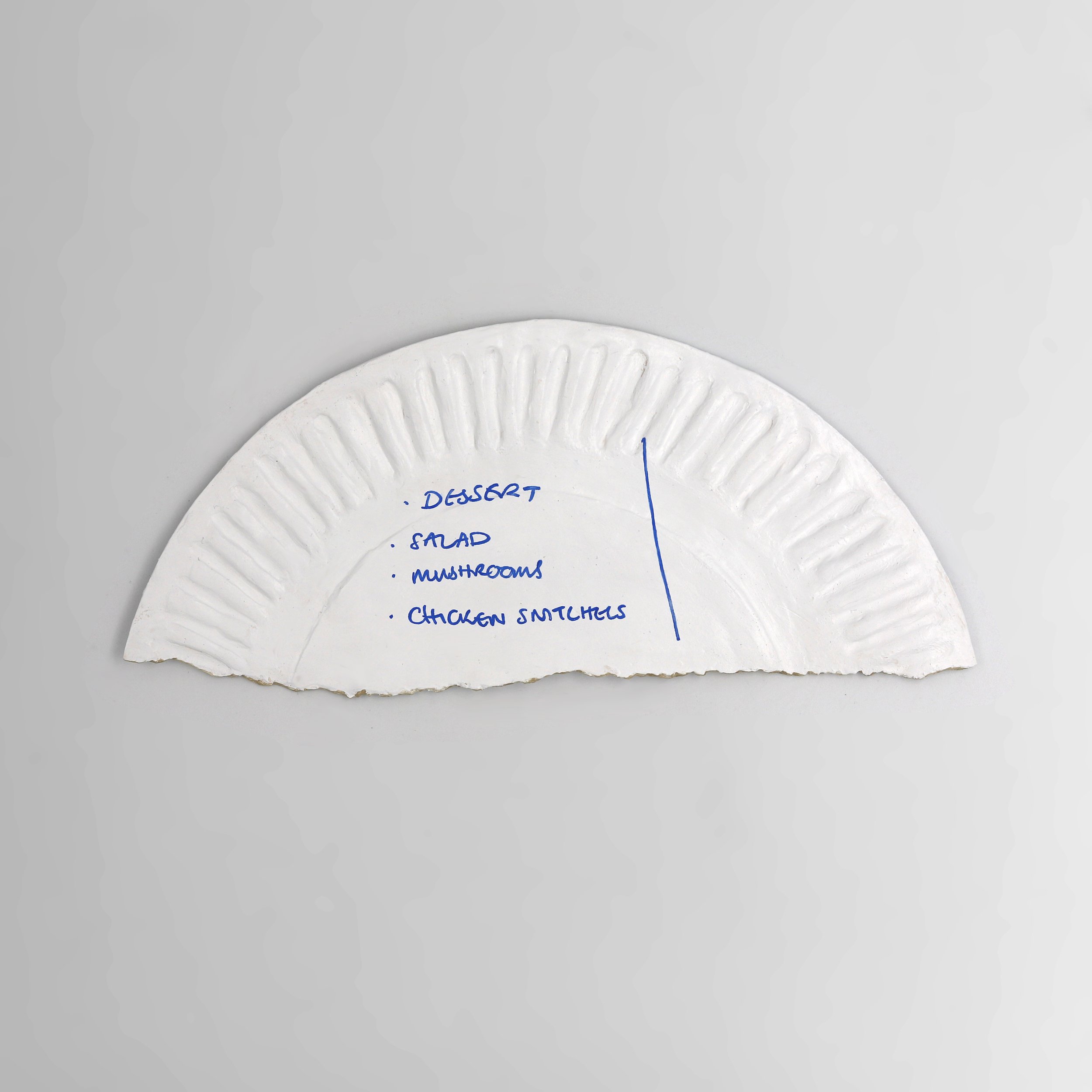
Chicken Snitchels

Coconut Cream

Disposable Glove

DRAINO

Egg, Mushroom, Water, Mince, Avocado, Blueberry

Figure out what to cook for us + Eric

Grain Bread, Large Bread, Toast Bread

Green Bananas

Guinea Pig Meal

hi mum

Kids fizzy drinks *maybe*

Kids

Le snacks

Lynx Anarchy or Africa

Milk, Dog Food, Cat Food
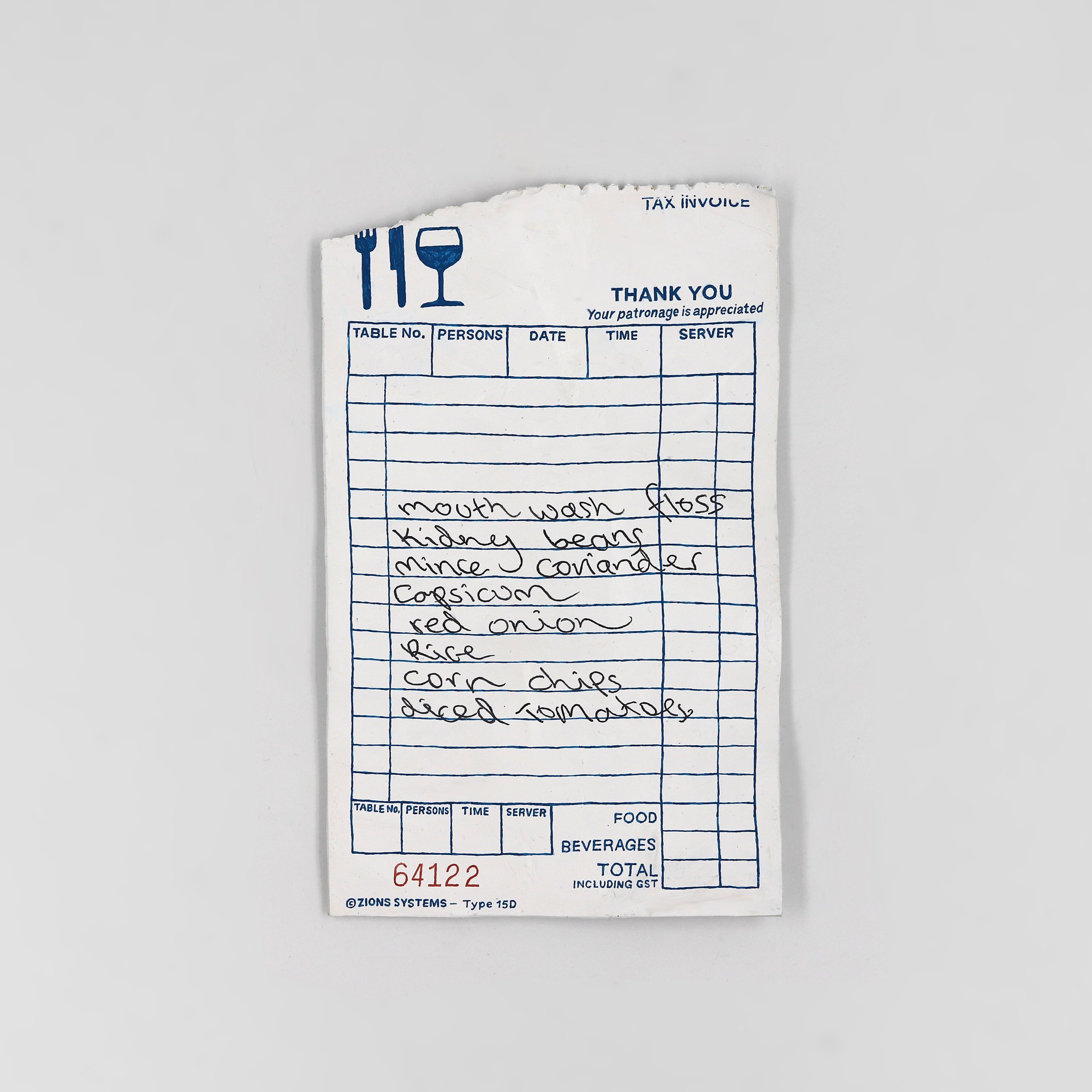
Mince Corriander
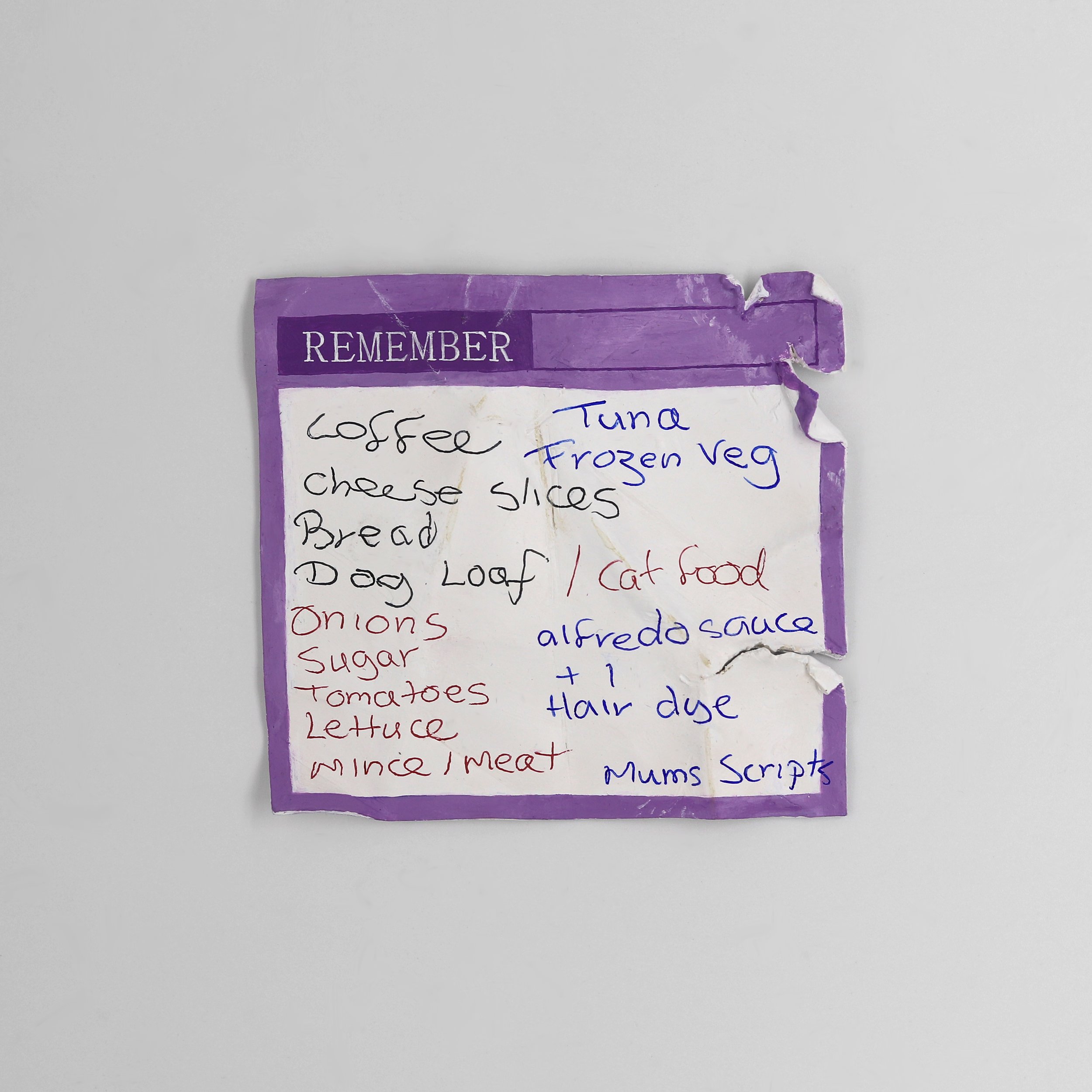
Mums scripts

My red wine

Oats- refer to pic I send you

Pet friend

Peters shit

Photo frames from Target

Raisin Bread
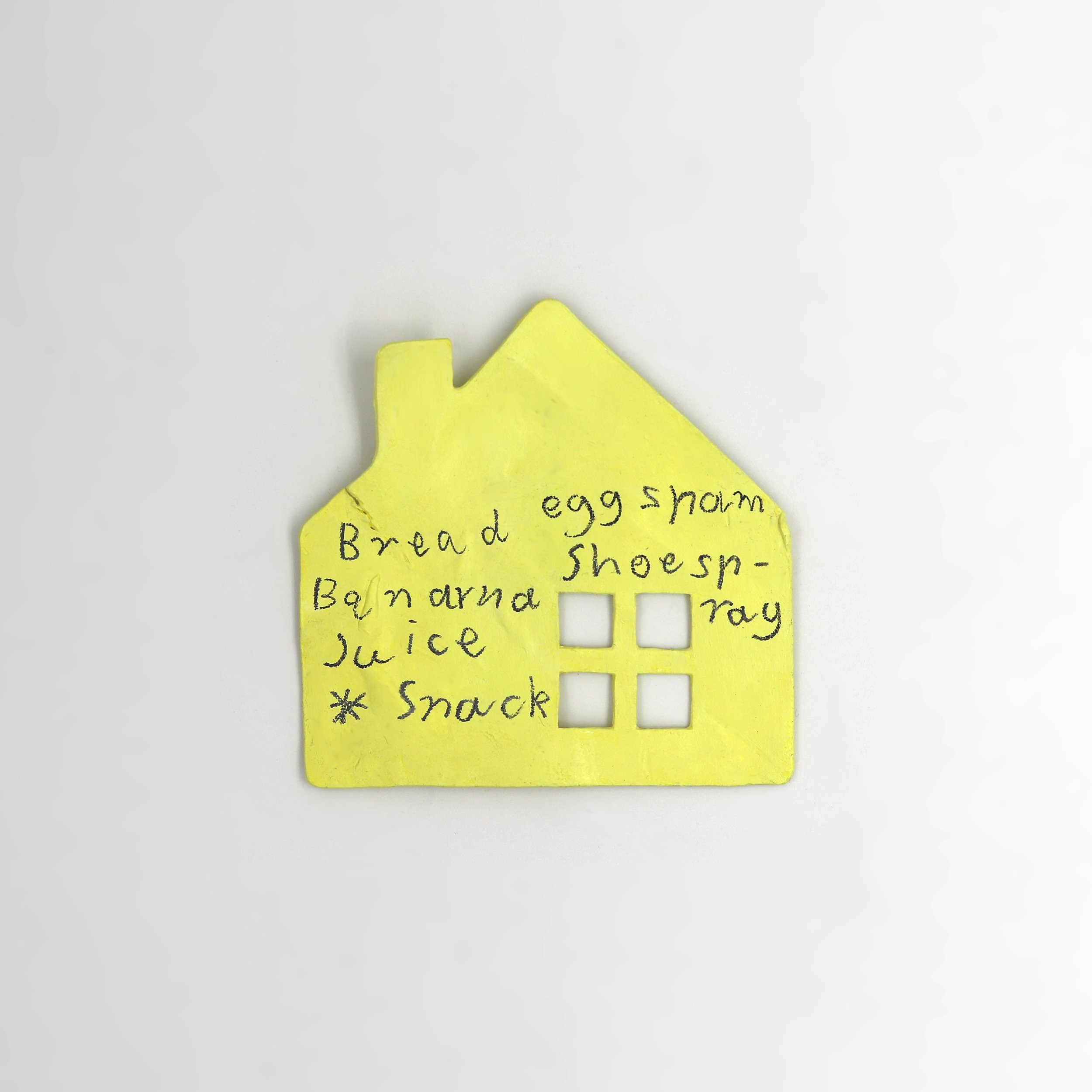
shoesp-ray

Small Chicken Stock

Stricktly Nothing Else!
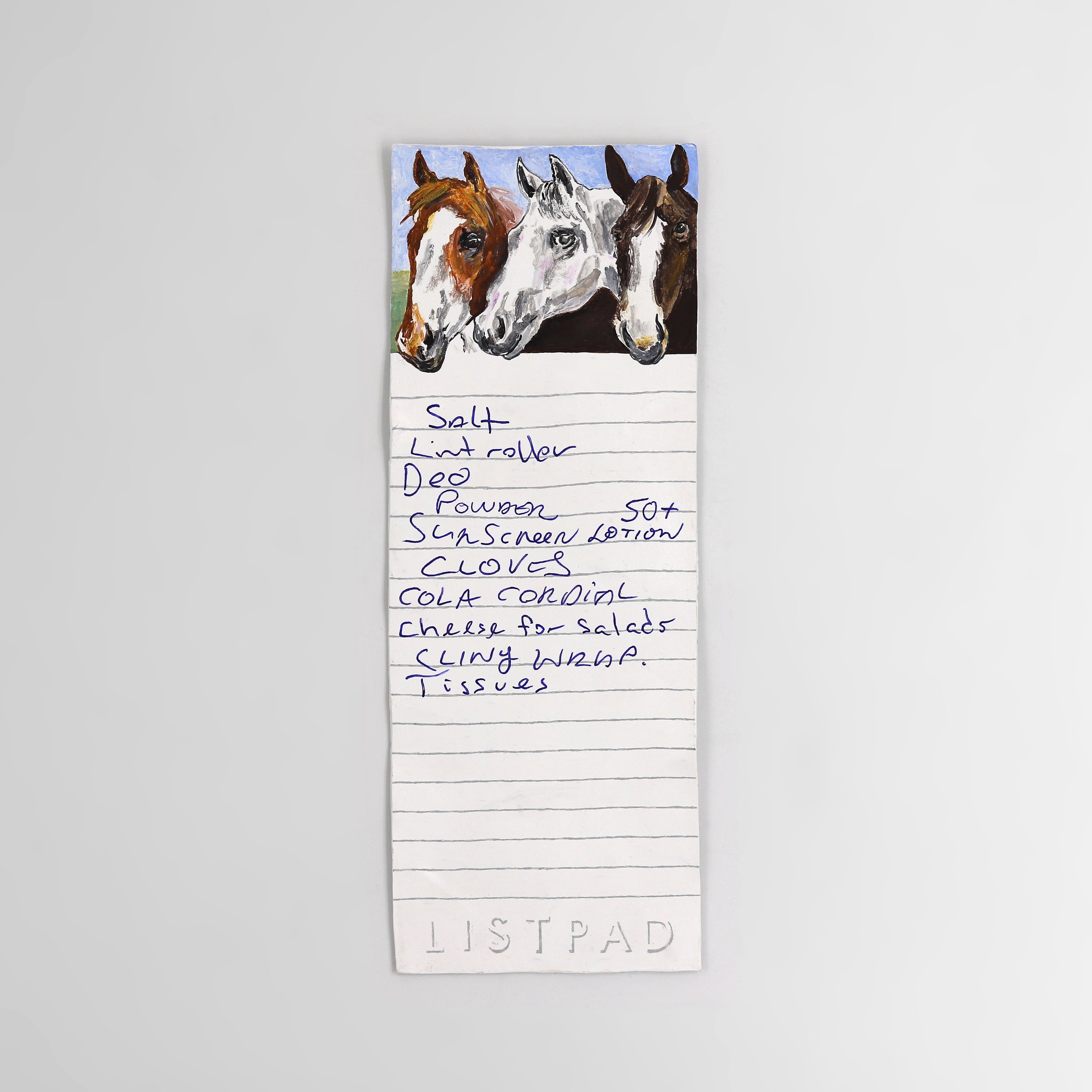
Sunscreen Lotion 50+

Sweets??

Take stuff to op shop

Have a look in the cupboard and Fridge to see what we need

Tues Tuna Pasta Bake

TV Week
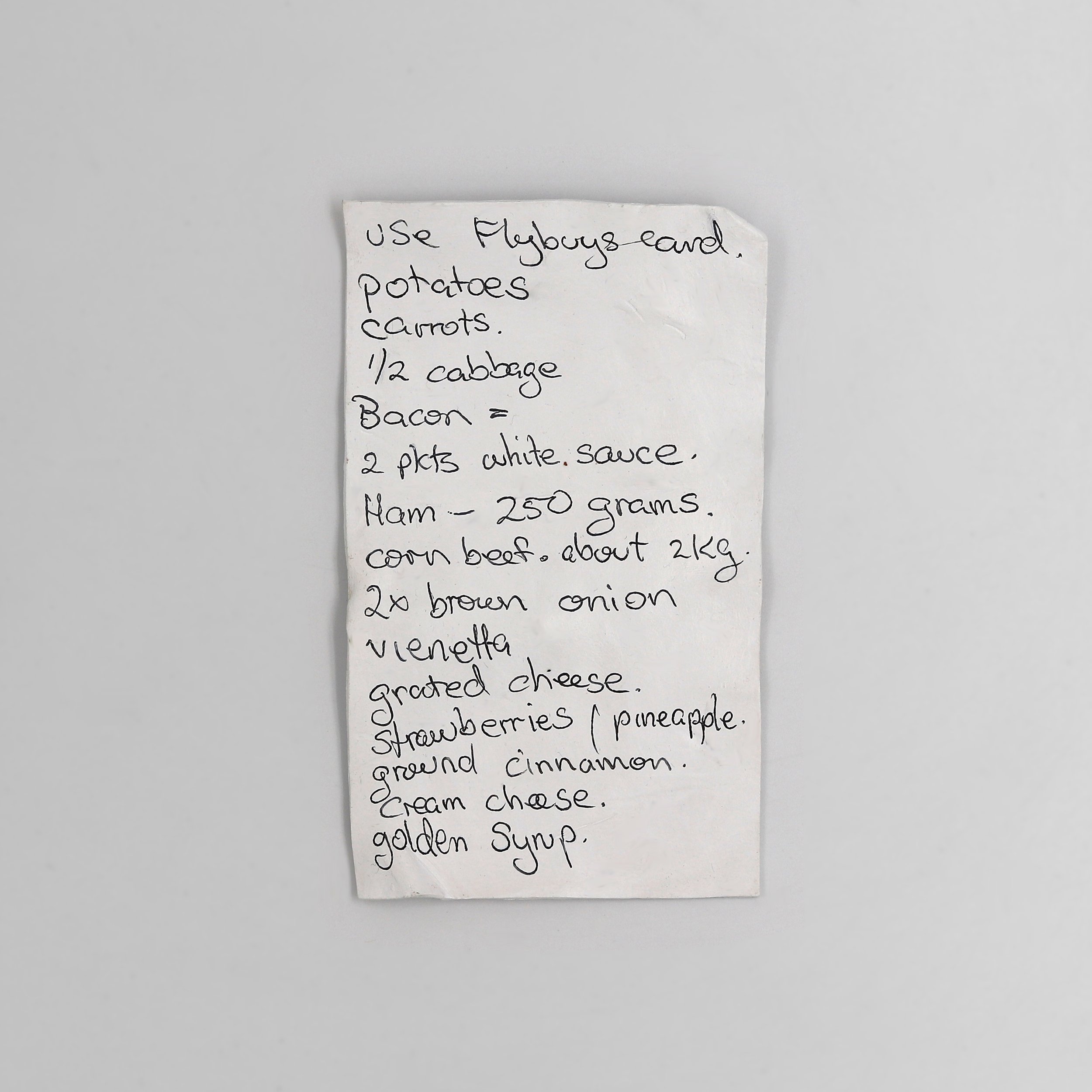
Use Flybuys card

Whole chicken